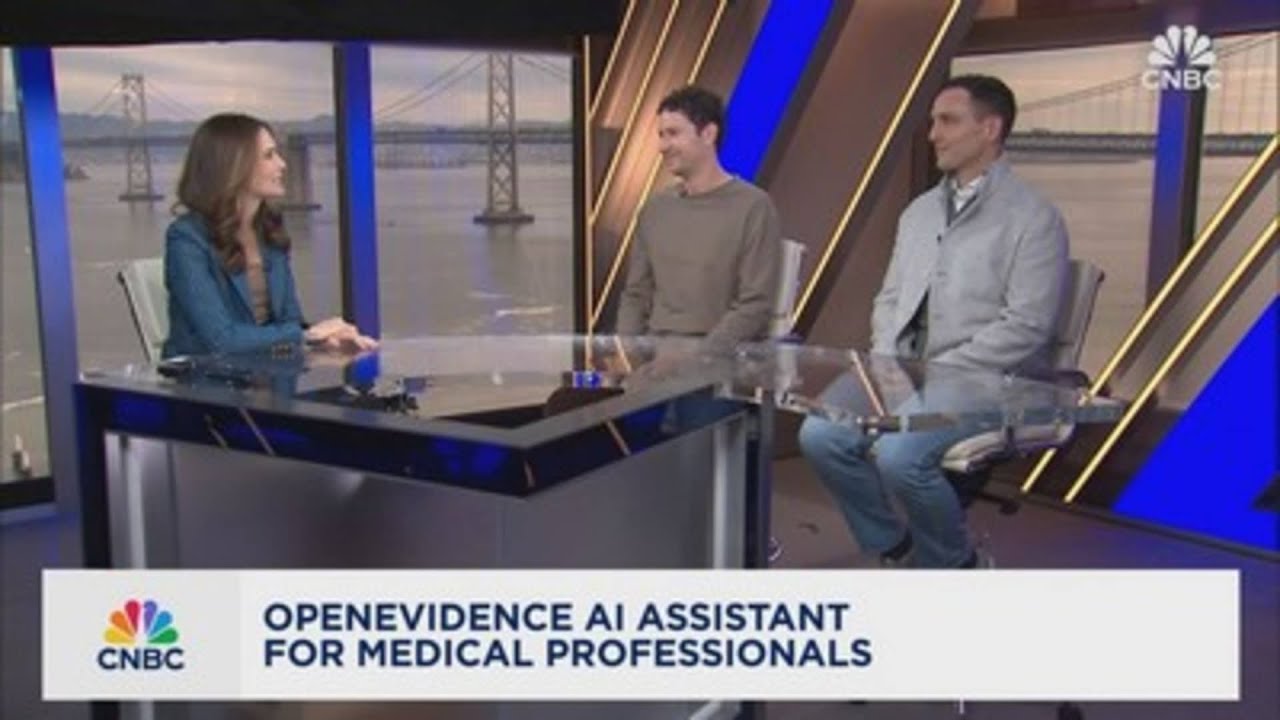The video features Daniel Pat and Pat Grady discussing OpenEvidence, an AI tool designed to assist doctors with clinical decision-making by providing reliable, evidence-based support, addressing the challenges of overwhelming medical information. They highlight the platform’s potential to improve patient outcomes, reduce administrative waste, and revolutionize healthcare delivery while emphasizing the importance of trust in medical AI.
In the video, Daniel Pat and Pat Grady discuss OpenEvidence, a groundbreaking AI tool designed to assist doctors in making clinical decisions at the point of care. The conversation begins with Grady highlighting the significant investment round led by Sequoia Capital, emphasizing the immense potential of AI in healthcare. He notes that the healthcare sector is ripe for innovation, particularly in addressing the challenges faced by doctors who often struggle to keep up with the overwhelming volume of medical information. OpenEvidence aims to tackle this issue by providing doctors with reliable, evidence-based support to enhance their decision-making processes.
Daniel Pat shares his background, detailing his previous experience as the founder of Keno, an early AI application company. He explains how personal experiences with the healthcare system motivated him to create OpenEvidence, which serves as an AI co-pilot for doctors. The platform is currently used by over a quarter of U.S. doctors and is designed to help them navigate complex medical scenarios, ultimately improving patient outcomes. Pat emphasizes the importance of trust in medical AI, noting that OpenEvidence is built on high-quality, peer-reviewed medical literature, which sets it apart from other AI tools that may rely on less reliable sources.
The discussion also touches on the challenges within the U.S. healthcare system, including a projected shortage of doctors and the increasing complexity of medical knowledge. Pat highlights that the rapid pace of medical research, with new studies published every minute, makes it nearly impossible for doctors to stay updated. OpenEvidence addresses this challenge by providing doctors with access to the latest medical information, thereby enabling them to make informed decisions that can save lives. The platform has received positive feedback from doctors who have successfully used it to improve patient care.
Grady and Pat further explore the potential for AI to reduce administrative waste in healthcare. They discuss how OpenEvidence’s user-friendly design allows for easy adoption by doctors, bypassing the lengthy sales cycles typical in healthcare technology. By focusing on the needs of clinicians and providing a free tool, OpenEvidence has gained traction and is poised to expand its influence within the healthcare system. The conversation highlights the dual opportunities in healthcare: improving clinical decision-making and streamlining administrative processes.
Finally, the video concludes with a discussion on the broader implications of AI in healthcare. Pat expresses optimism about AI’s potential to enhance patient outcomes and reduce costs by minimizing medical errors and improving efficiency. He notes that while there are challenges associated with AI, OpenEvidence represents a positive application of the technology that can genuinely benefit both doctors and patients. The conversation underscores the importance of building trust in AI tools and the potential for OpenEvidence to revolutionize the way healthcare is delivered.
